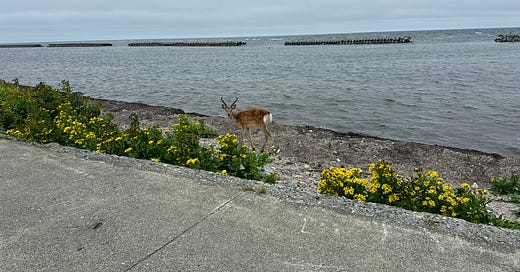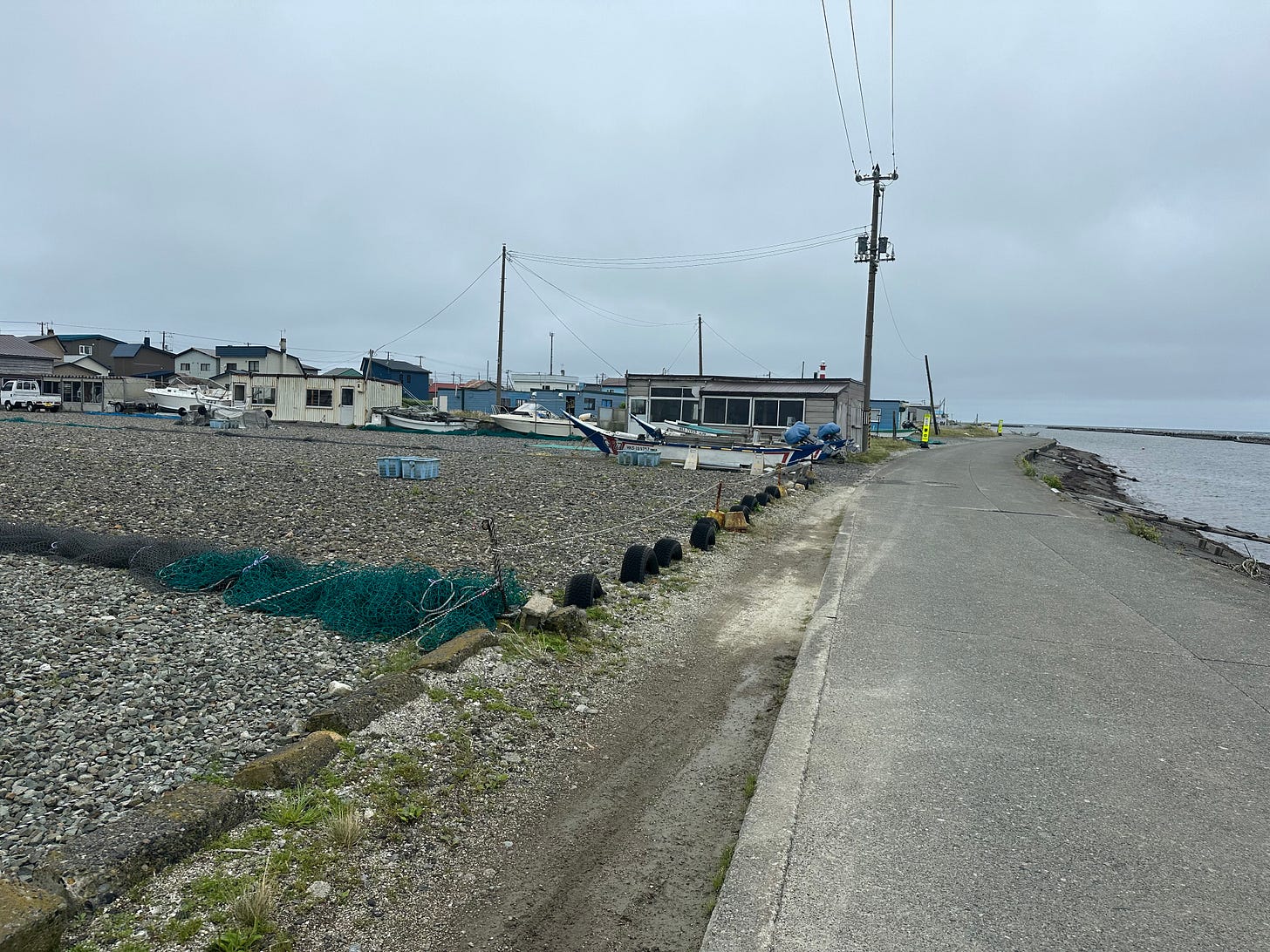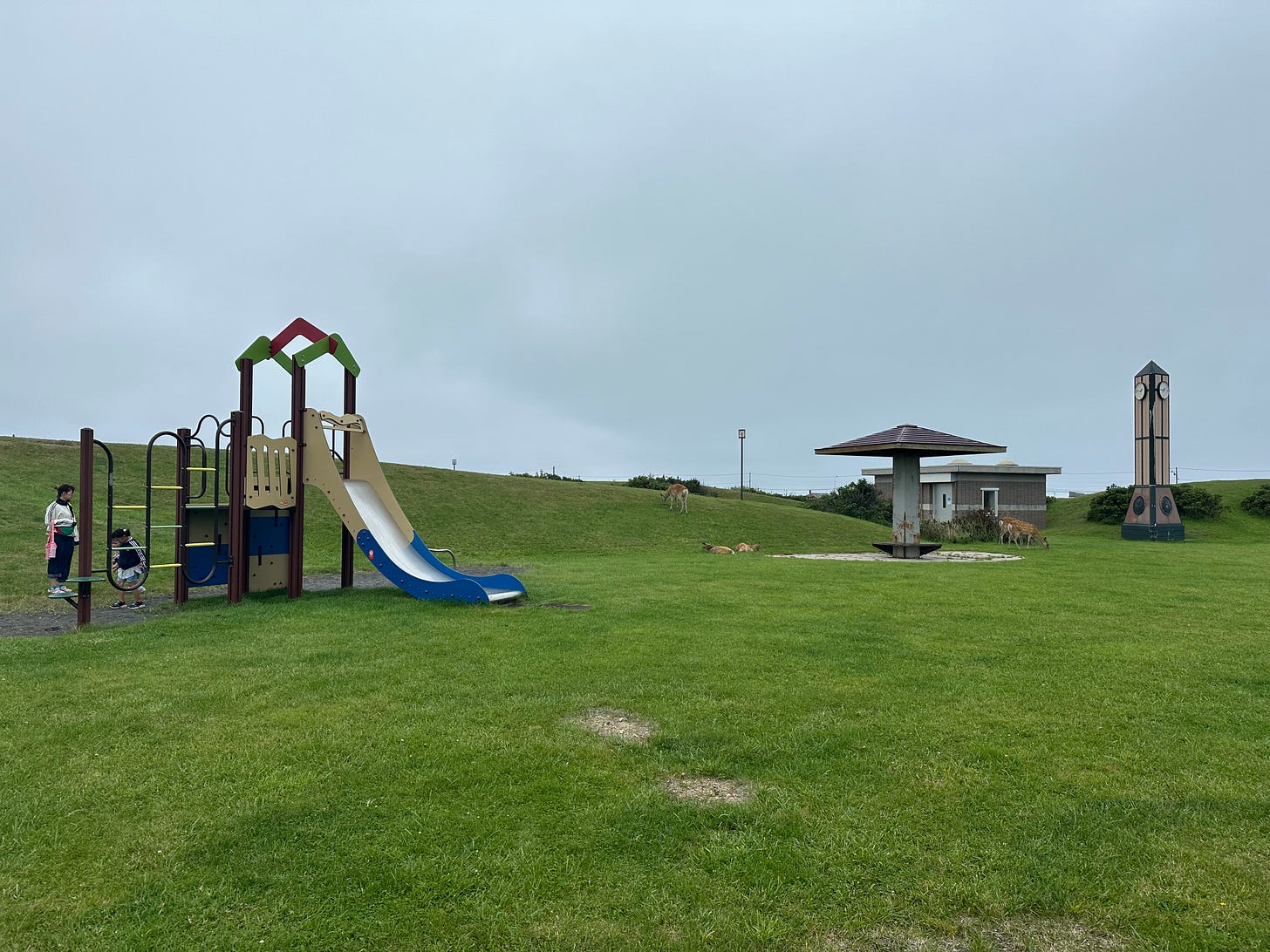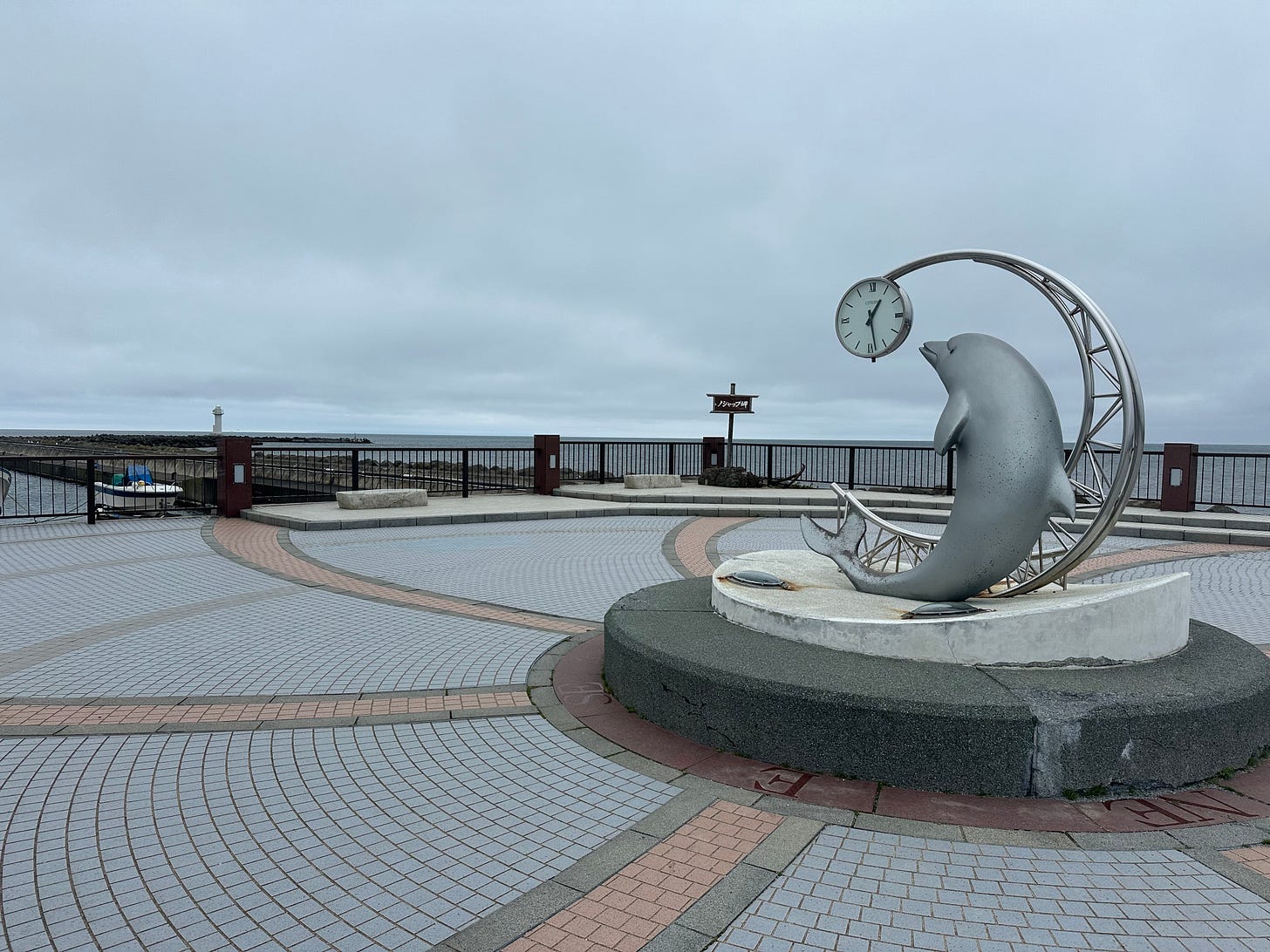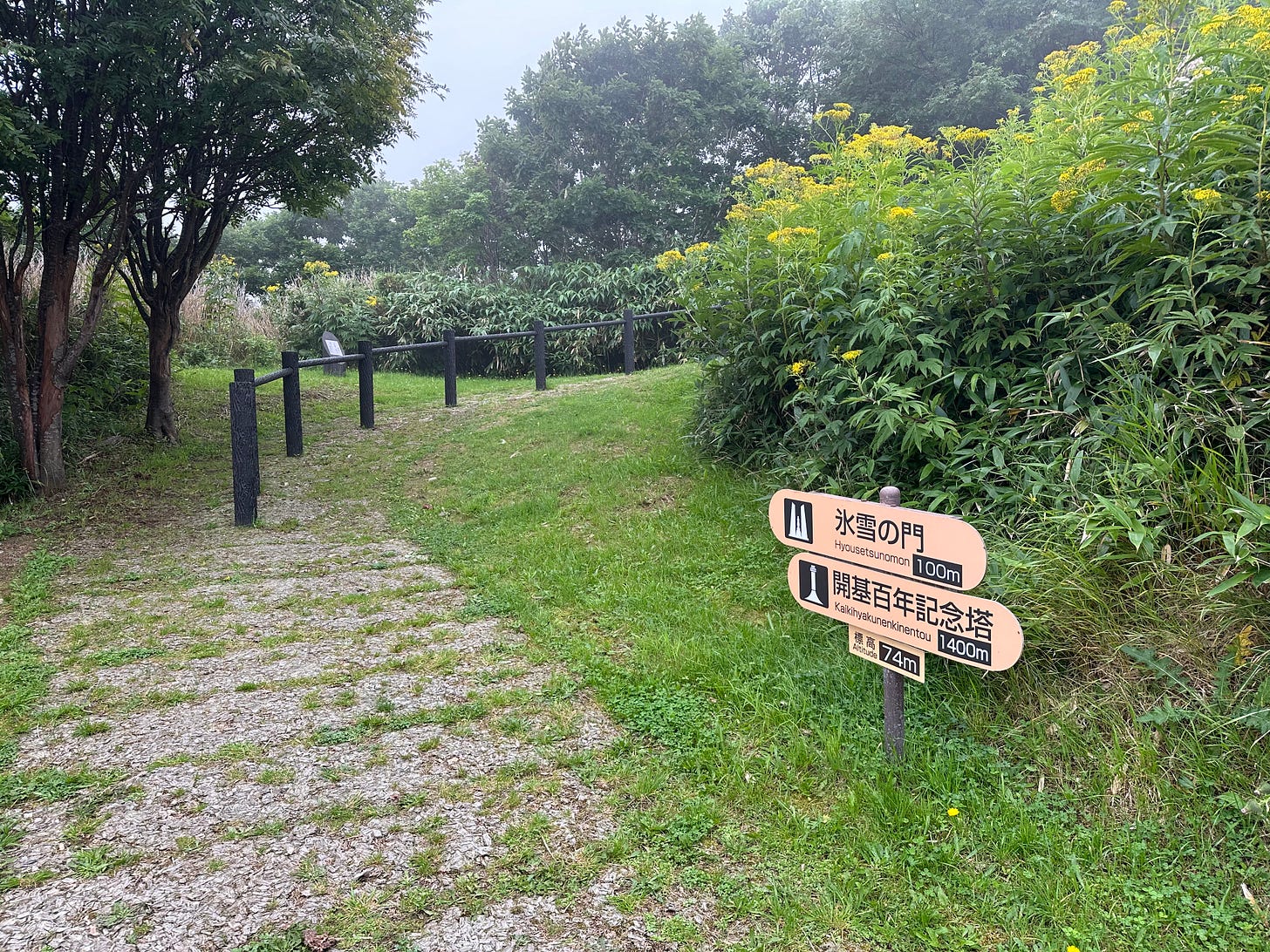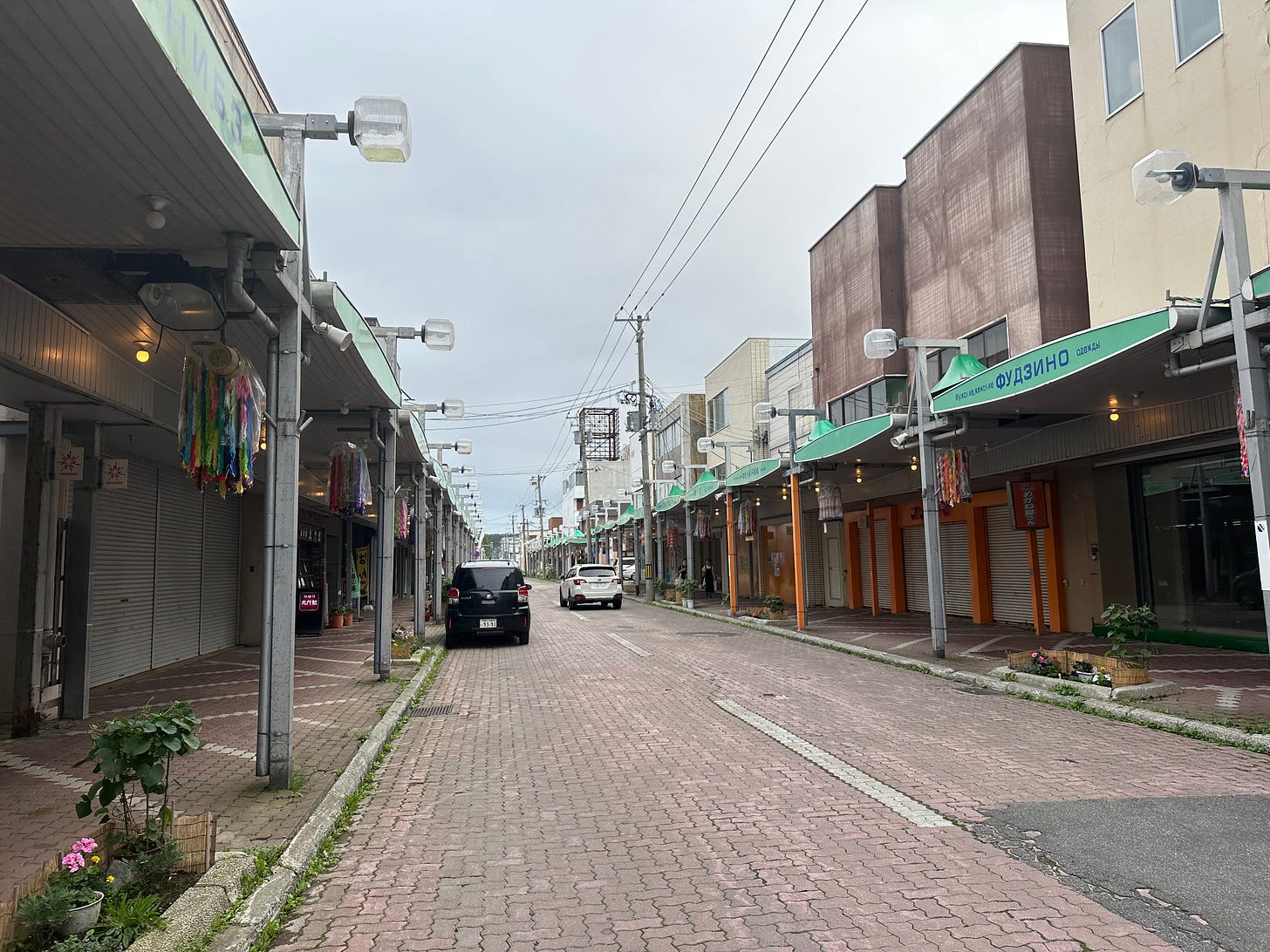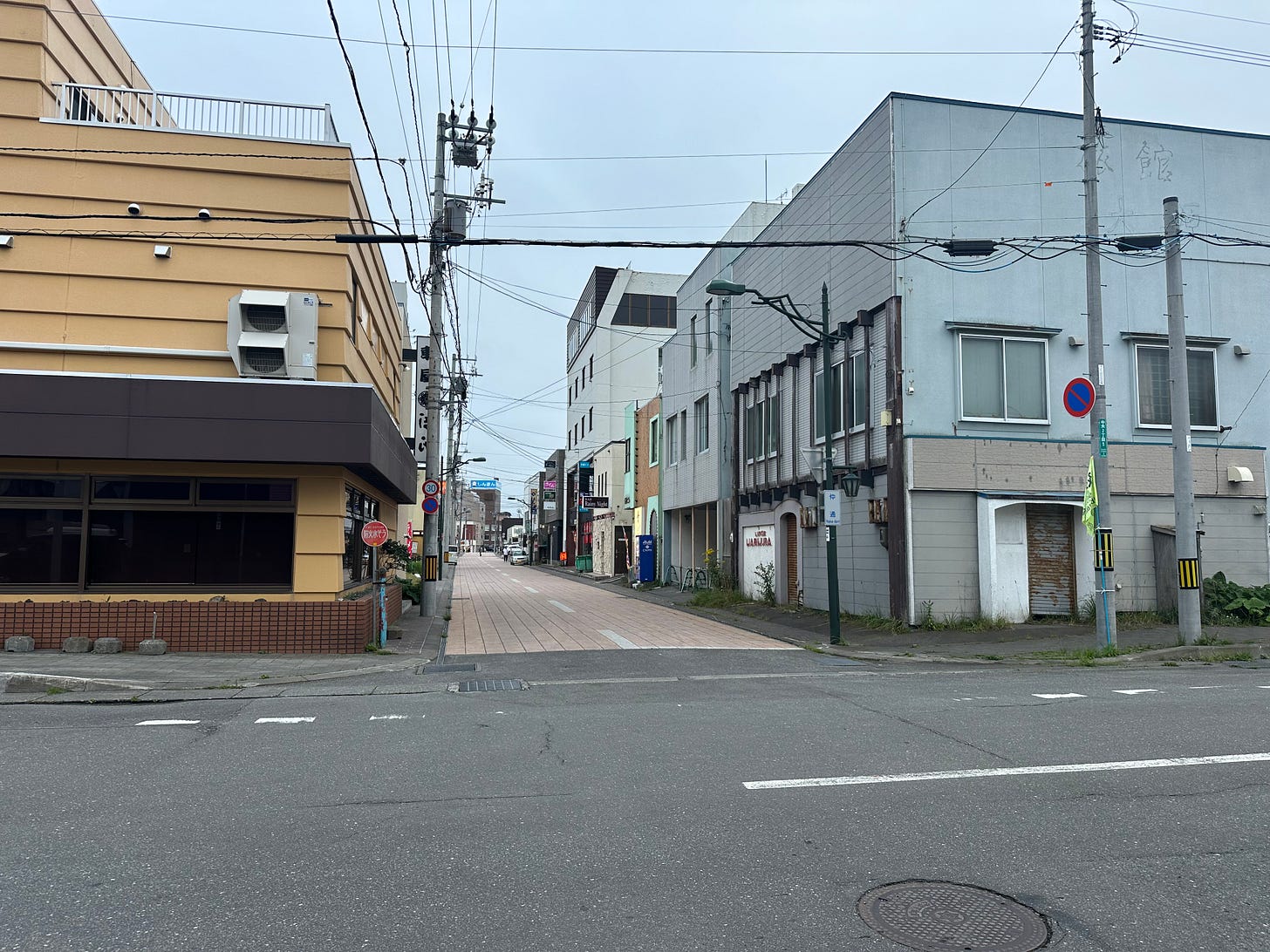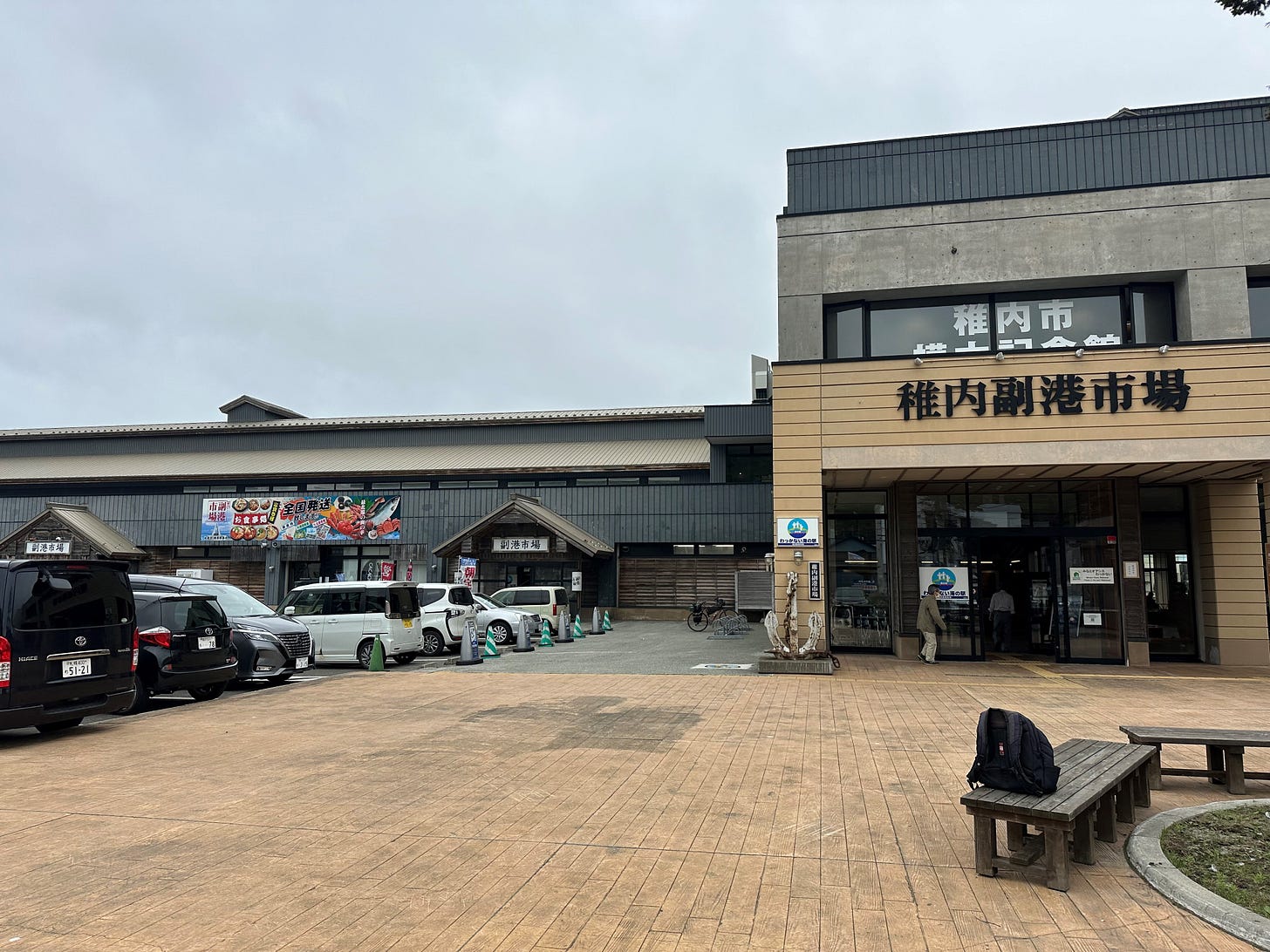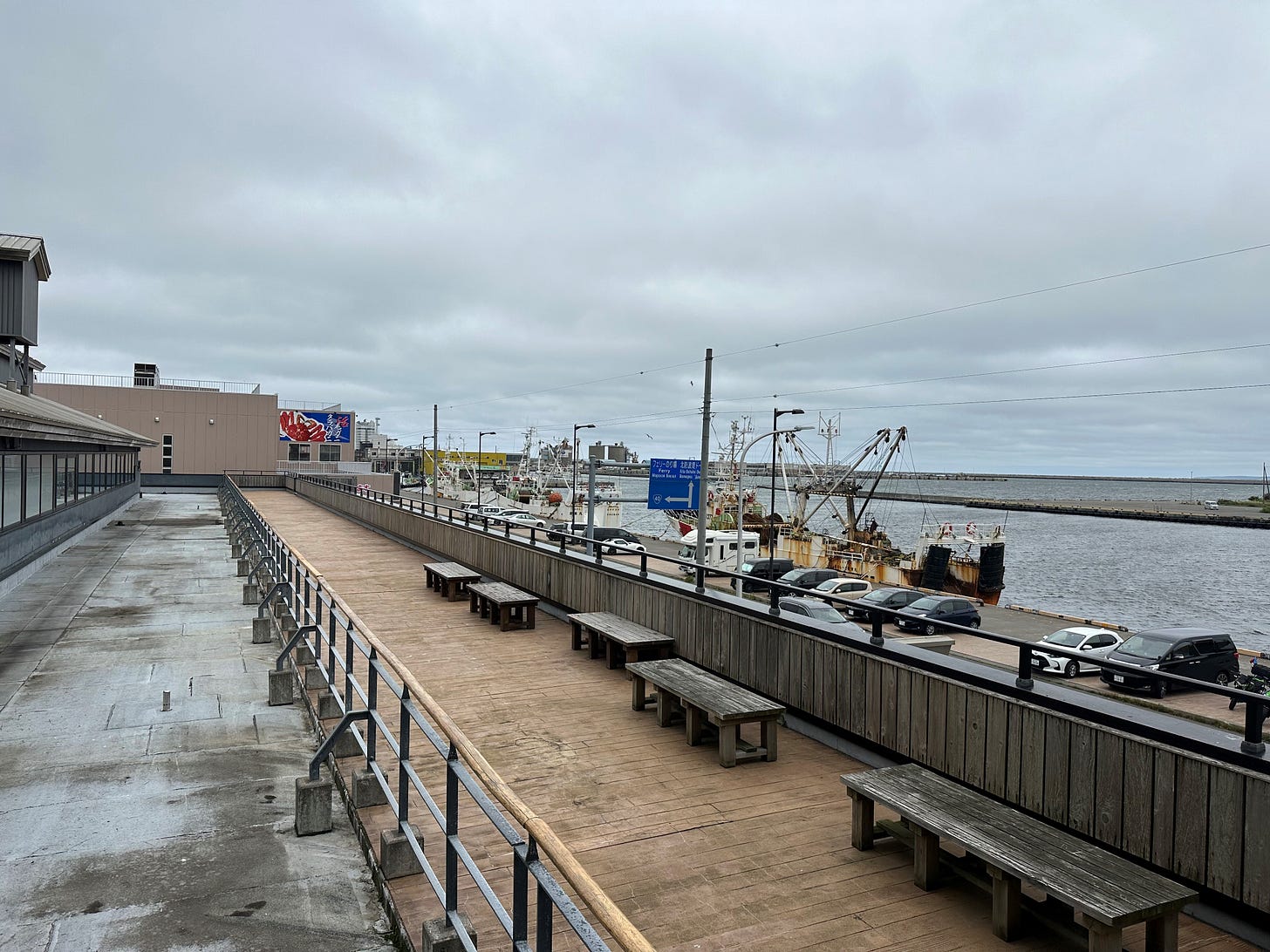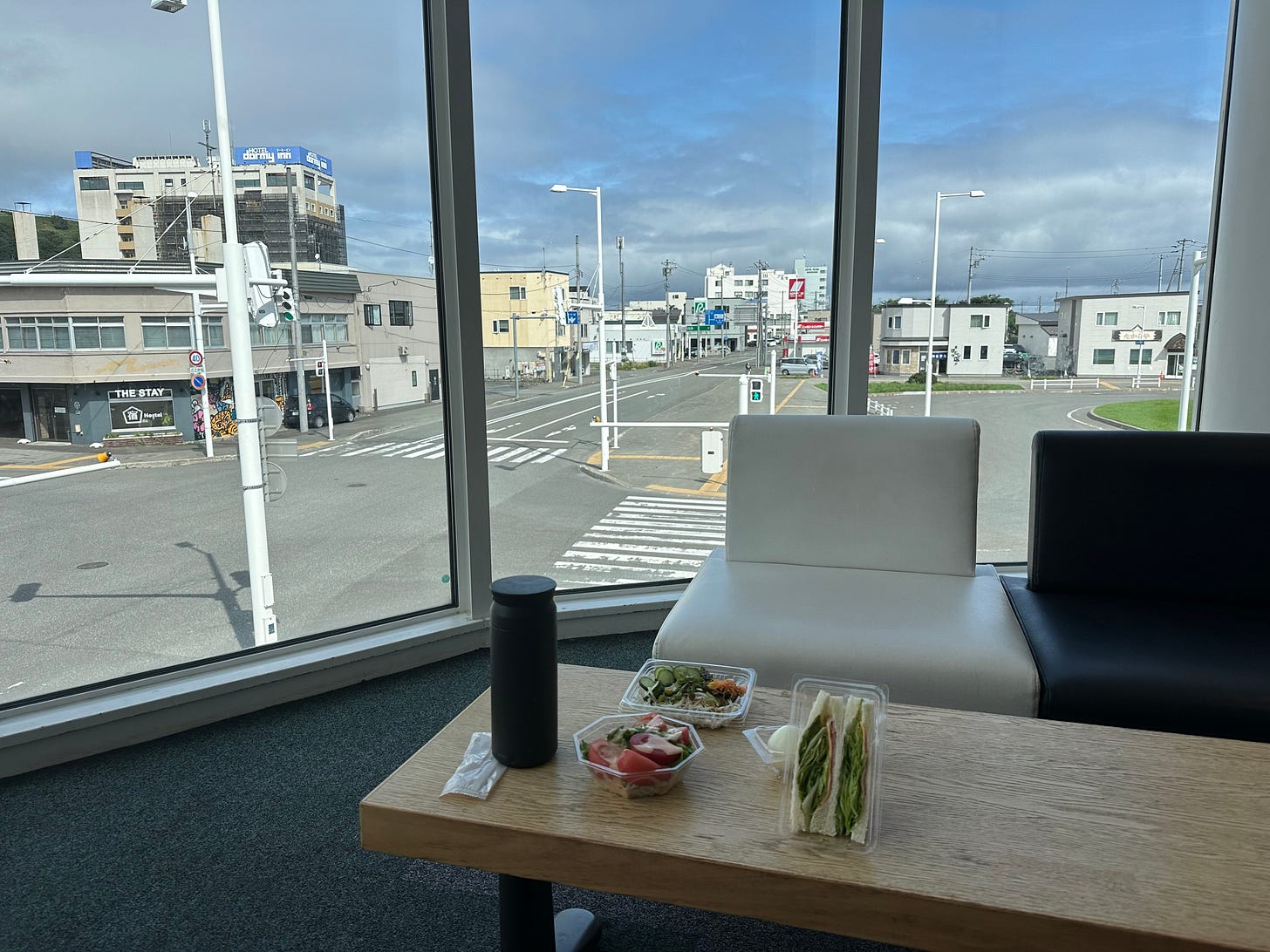Hokkaido. Wakkanai. August 2024. Part 2. Final. Cape Noshappu, Wakkanai Park and "downtown".
Good bye Wakkanai. Capes, parks, deers, windmills, sea urchin, WINDS.
Part 1 is here.
Cape Noshappu and Wakkanai Park. Worth a visit.
I like flat long walks along the ocean or lake or any other water source. 4km walk from JR (Japan Railway) Wakkanai station towards Cape Noshappu is one such route. It is also good for runners, stretching all the way along the ocean with more boats in sight than cars.
Also, you will probably see more deers than humans. When I walked opposite direction towards Cape Soya a few days ago I did not come across any deers. Interesting.
The species of Hokkaido deers called ezoshika or Ezo deers are unique to this land only. They are much bigger than their counterparts in Kanto area of Japan (main Honshu island). Looking cute to me, but the locals think differently. Hundreds of deer-car accidents and damage to farms crops are main reasons Hokkaido government started measures to control deer population which is estimated to be around 700,000 these days. There is a hunting season and a bounty system in place at 9,000 yen per “carcass”.
Cape Noshyappu, as I read, is a great spot to see sunset over nearby Rishiri island, but the weather again was not favorable to me. Wind and heavy fog.
There is an aquarium nearby and a bunch of small restaurants specializing in fresh seafood.
From Noshyappu I walked towards Wakkanai Park, basically a walk back but I chose different route via Soya Sunset Road. Just because I liked this name.
The park is vast with a few walking paths step by step bringing you to a higher altitudes. Today was extremely foggy, and at only 100 m I was walking through a thick cloud. The photo below is a bit lower. I bet it is pretty nice on a clear day.
Wandering “downtown”.
As I mentioned in Part 1, most eating, drinking and shopping is concentrated around JR stations, Wakkanai and Minami-Wakkanai.
I walked through empty shotengai shopping district and was amazed by the number of signs in Russian.
There used to be regular ferries between Sakhalin in Russia to Wakkanai which were suspended in 2019. Probably Russians used to come shopping here, hence the signs.
Most eateries open after 5 and are located around Dormy Inn hotel. There are 7-8 establishments with various menus. Actually, if you happen to be in Wakkanai rather than hotel Meguma mentioned in Part 1, I highly recommend Dormy Inn, my hotel chain of choice in Japan. As usual with Dormys, it houses dry sauna and a hot spring on the top floor. Wakkanai branch is offering great views of the bay.
Port Oasis building located between Wakkanai and Minami-Wakkanai JR stations is another good spot for shopping, eating and bathing. Guess it gets busy in winter, as a real oasis during cold weather and winds.
In search of fresh seafood? Then Fukuko Market inside is your place. You can buy anything and organize delivery to your residence in Japan.
The complex has couple of restaurants inside and a natural hot spring.
Another interesting spot is Wakkanai JR station. It is the northernmost railway station in Japan. The sign below mentions city of Makurazaki in Kagoshima Prefecture in the south, which is a sister city of Wakkanai. “Travel to Makurajima starts here”. 3099 km from Wakkanai. Would be fun to try one day.
Wakkanai trip coming to an end. It meant to be a gateway to Rebun Island only, but I connected to the place. A bit. Would I live here? Probably not. However, the recent trips to Hokkaido sent me thinking if I should consider it as a supplementary base for July-September to escape hot summers of Kanto region of Japan. I will see more places before I decide.
Last breakfast in Wakkanai before leaving. JR station building. All purchased in downstairs convenience store.
I am looking forward to a ferry trip to Rebun where I will stay nearly a week.
